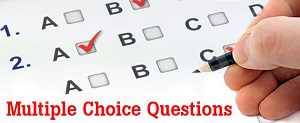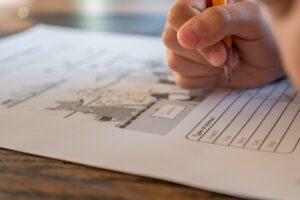MCQs Biology F.Sc. Part 2 ( 2nd Year )
Chapter No.16
Support and Movements
Total MCQs = 165
121. Curare, a toxin, blocks the acetylcholine receptors on muscle tissue. This would result in:
(A) Increased stimulation of the muscle fiber
(B) Inability of the muscle to respond to motor nerve stimulus
(C) Contraction of the muscle fiber
(D) Excessive contraction and convulsions
Answer:
(B) Inability of the muscle to respond to motor nerve stimulus
122. Training excersizes such as jogging, swimming and aerobics have this effect on skeletal muscle tissue:
(A) Increased number of mitochondria per muscle fiber
(B) increased number 0 1T1LSC1Q fibers
(C) Increased number of motor units
(D) Increased number of skeletal muscles
Answer:
(A) Increased number of mitochondria per muscle fiber
123. Muscular dystrophy is a congenital disorder characterized by:
(A) Skeletal muscle degeneration
(B) Excessive convulsions
(C) Shaking and trembling
(D) Only cardiac damage
Answer:
(A) Skeletal muscle degeneration
124. Which of the following disorders is characterized by painful musculoskeletal tender points?
(A) Fibromyalgia
(B) Myasthenis gravis
(C) Duchenne muscular dystrophy
(D) Becker muscle dystrophy
Answer:
(A) Fibromyalgia
125. Anabolic steroids have all these effects except:
(A) Builds muscle proteins
(B) increases muscle strength
(C) Increases number of muscles in the body
(D) Can result in liver cancer and heart disease
Answer:
(C) Increases number of muscles in the body
126. Which of the following statements regarding aging and the muscular system is true?
(A) Aging is associated with decreased myoglobin production
(B) The effects of aging can be nearly completely reversed
(C) Satellite cells increase in aging causing fibrosis
(D) Young persons have more adipose in muscles compared to elderly persons
Answer:
(A) Aging is associated with decreased myoglobin production
127. The inactive non-conducting wood is called:
(A) Callus
(B) Heart wood
(C) Cork
(D) Sapwood
Answer:
(B) Heart wood
128. The living cells of cartilage are called:
(A) Osteoclasts
(B) Chondrocytes
(C) Osteoblasts
(D) Osteocytes
Answer:
(B) Chondrocytes
129. Hip joint and shoulder joint are examples of:
(A) Cartilaginous joint
(B) Synovial joint
(C) Hinge joint
(D) Ball and socket joint
Answer:
(D) Ball and socket joint
130. The atlas and axis vertebrate are located in
(A) Cervical region
(B) Thoracic region
(C) Pelvic region
(D) Lumbar region
Answer:
(A) Cervical region



